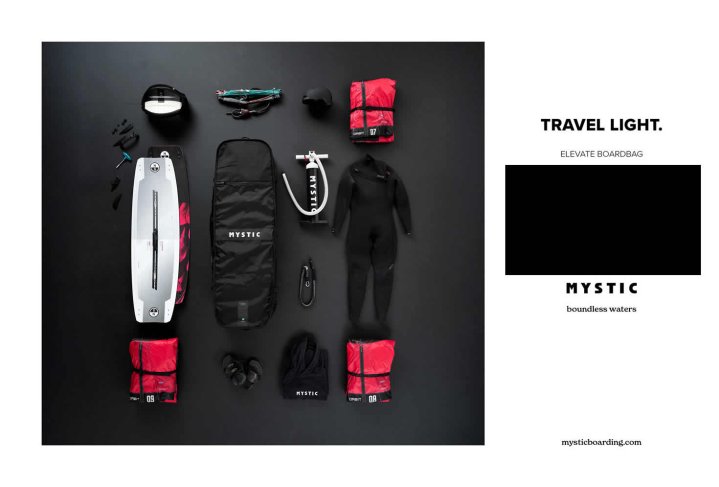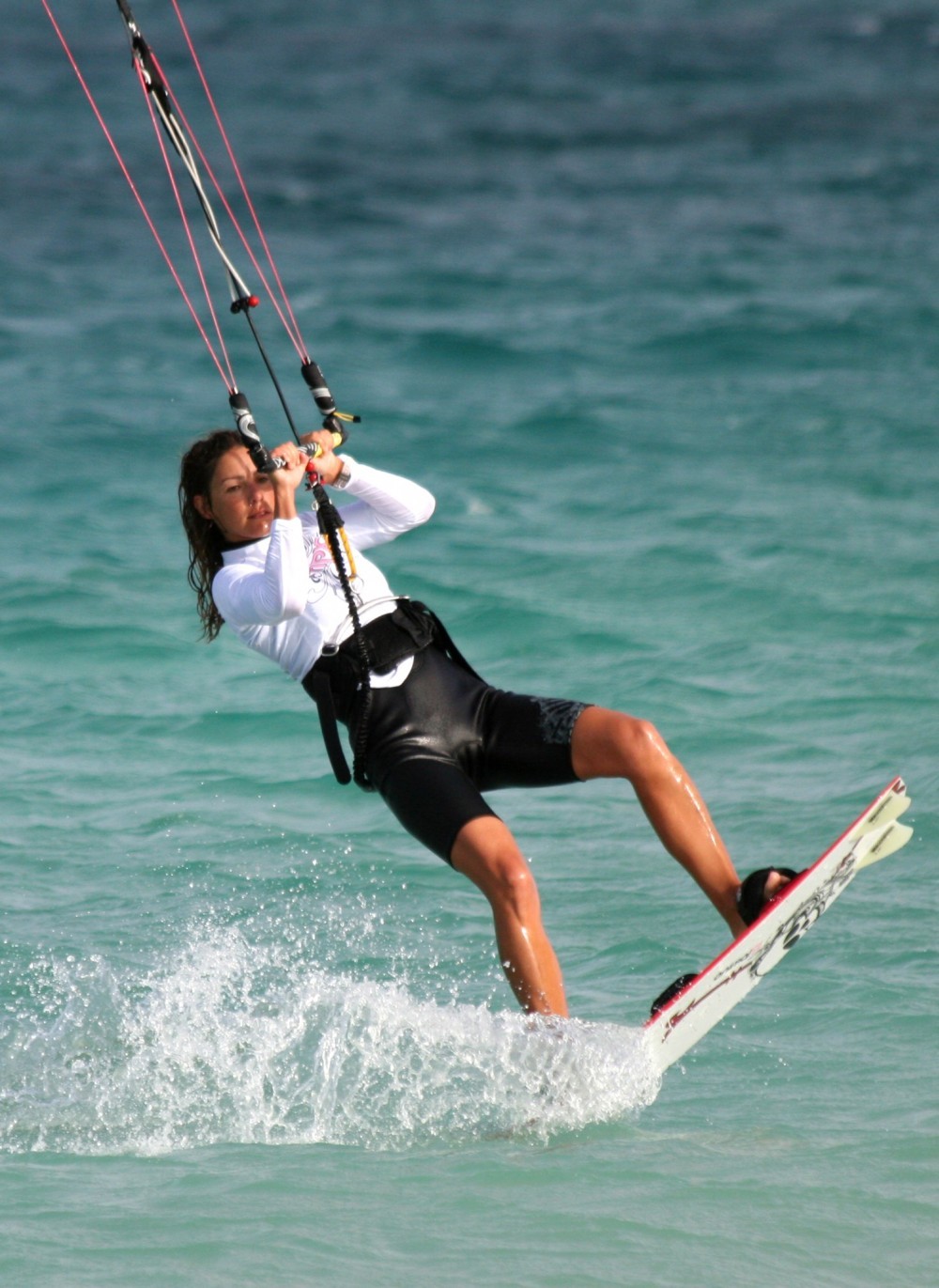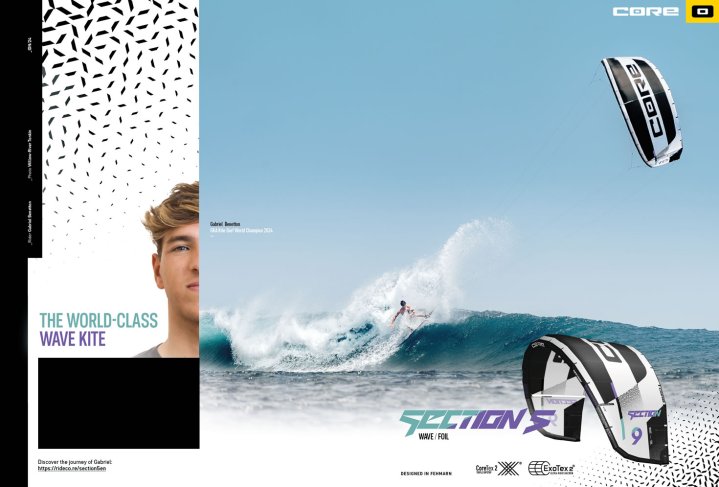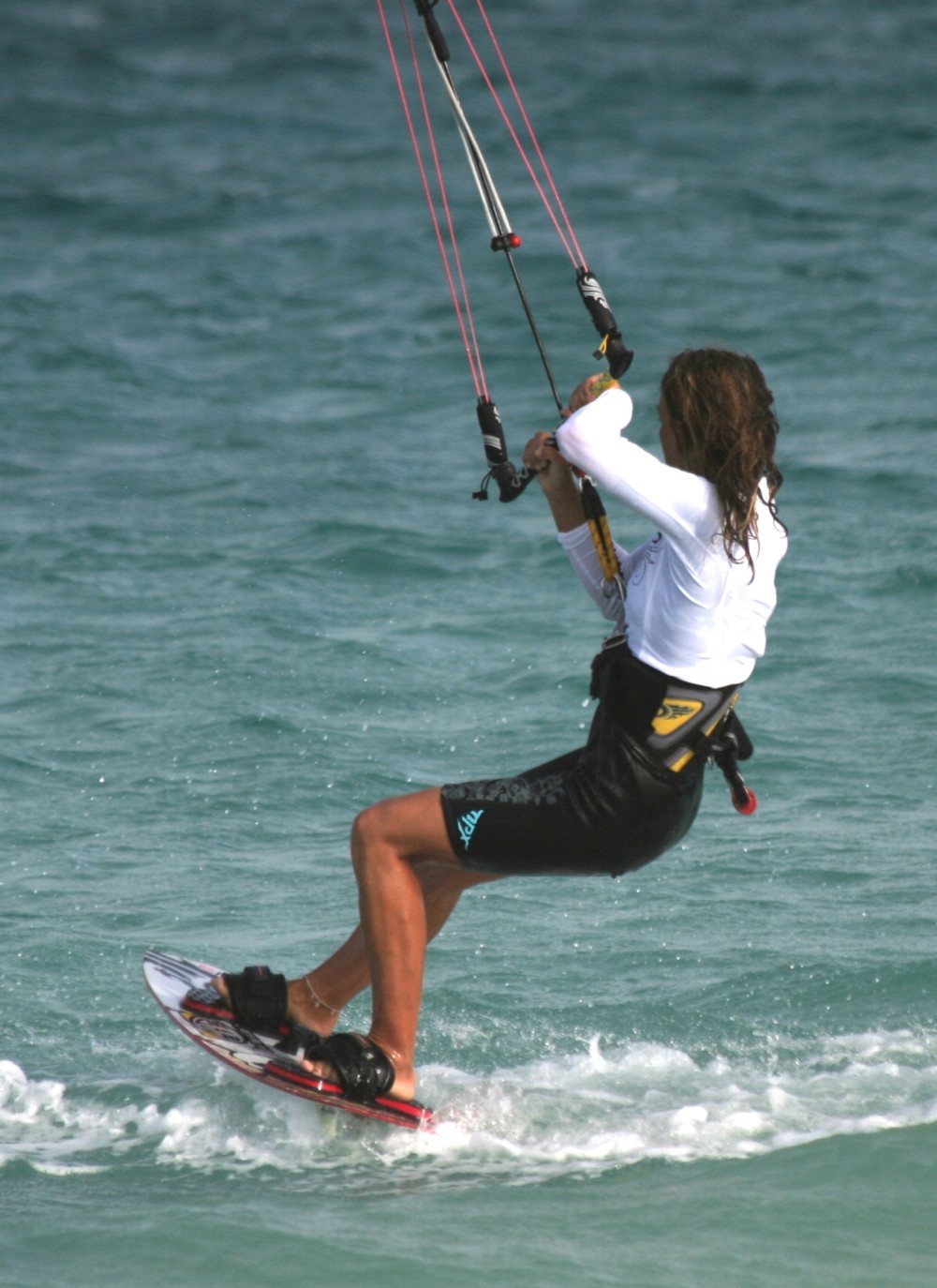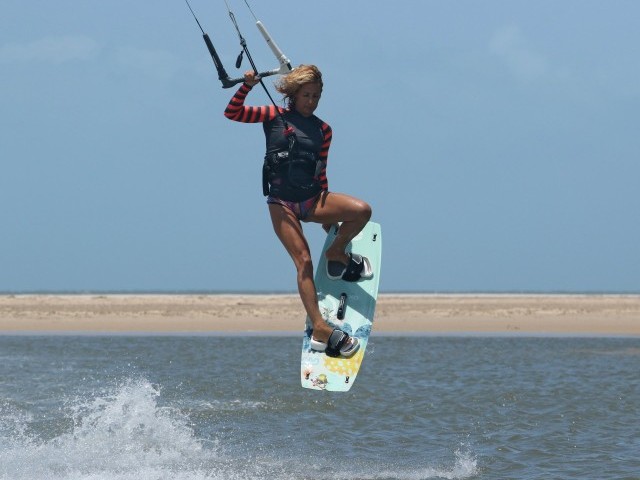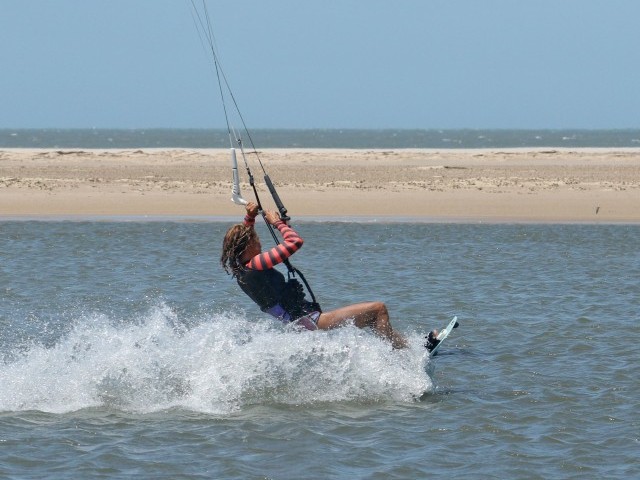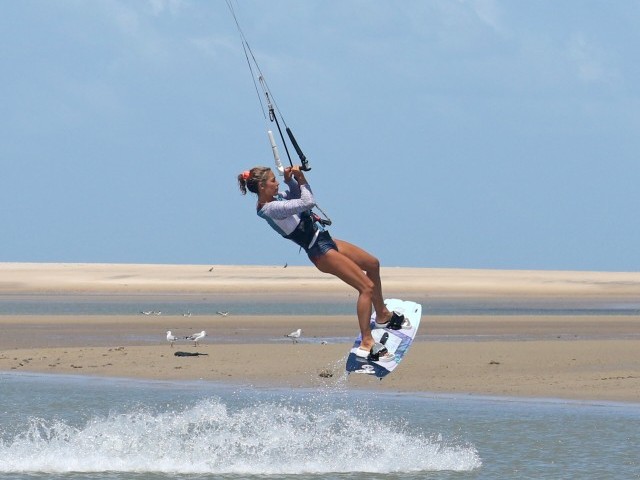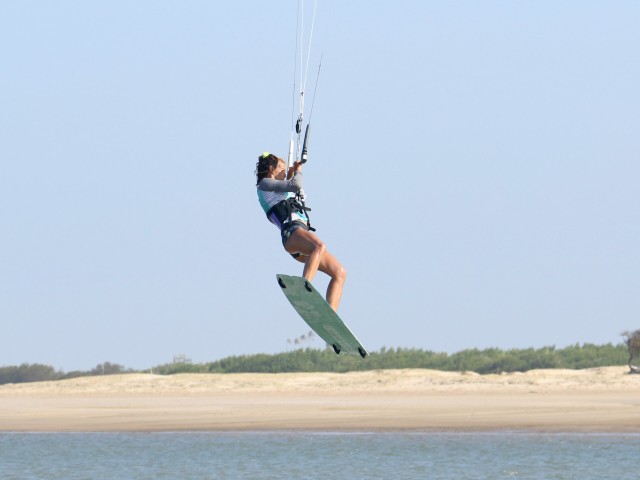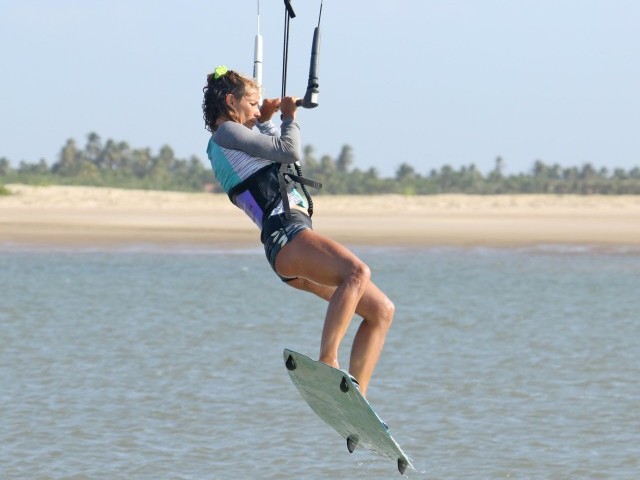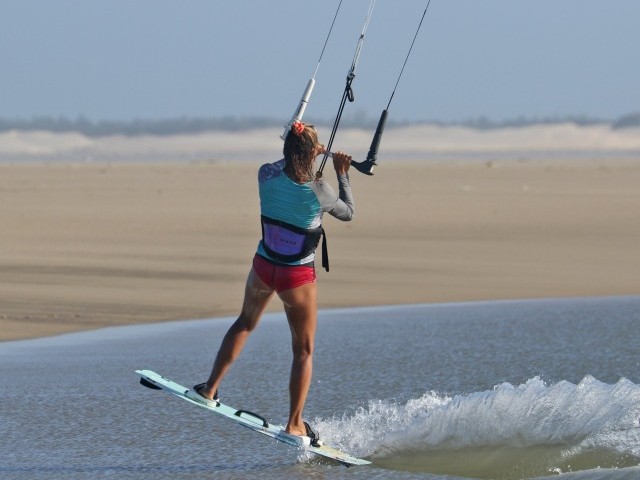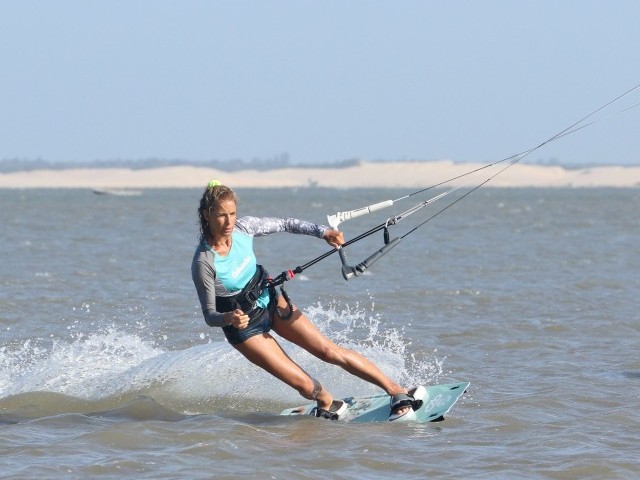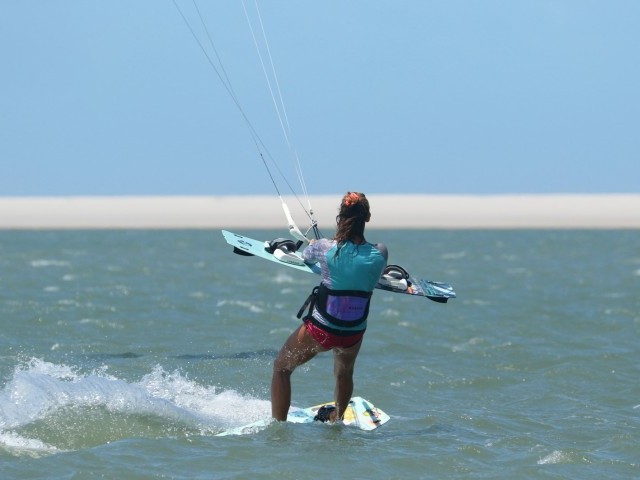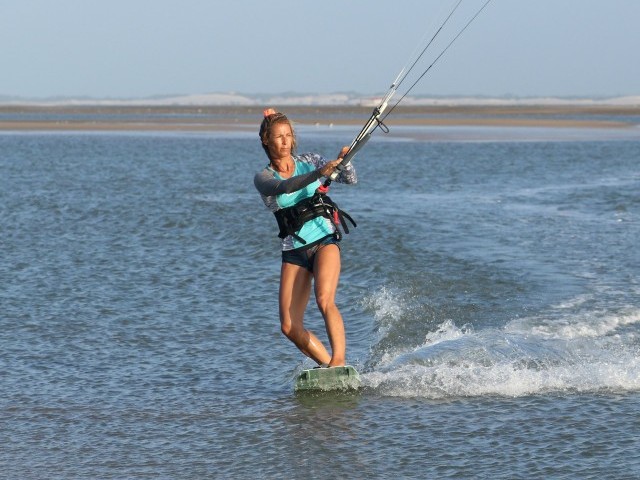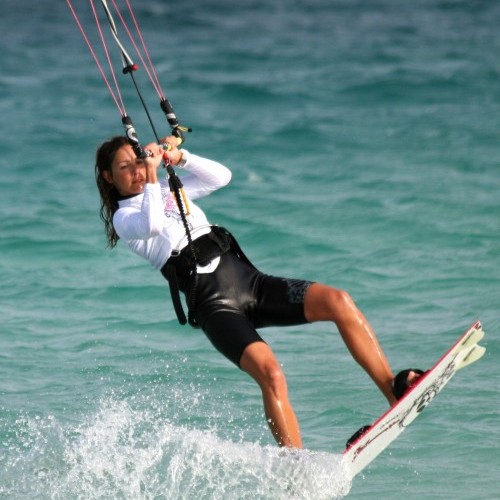
Back Loop Transition
Technique / Beginner
Introduction
There comes a time in every kiters life when suddenly all the hours of battling the elements really starts to pay dividends. Once you have mastered the many basic fundamentals you will have a solid foundation on which to build many blocks. The backloop transition is without a shadow of doubt the first funky add on to the beloved foundation formerly known as the air gybe, and when executed with finesse is the ultimate cheeky transition. Not only does it look good but with a slow and controlled rotation it feels like a rather special way to change direction too.
If you have the air gybe mastered and can get around your backward rotation, combining these two skills should be a doddle. In fact the air gybe is the key, so if you are struggling to get any control over this move, go back to basics and practice this, which we covered in issue no. 3.
Seeing is Believing
Once again understanding what you are about to do, and the differences to what you can already do will help no end before you go hammer and tongs at your next move. The back loop transition is effectively an air gybe with a back loop. In very basic terms, what you will be doing with the kite is air gybe, what you will be doing with your body is back loop.
The air gybe part is still very much the same, in that your aim is to jump up and momentarily hang before floating down and sailing off in the other direction. To briefly recap this means that:
- You still need to control your speed. If you are motoring at a comfortable speed, you will need to shed a load of it before take off, so that you don’t go flying off downwind. But not too much, otherwise you’ll stop.
- It’s all about the pop! You’ll also need to keep tension in you kite lines throughout the manoeuvre, so that you have control, float and can exit with power. So you’ll need to concentrate on keeping the kite in the right place, preferably around 12 o’clock. To make this a reality you must concentrate on getting as much pop as possible. In Pic A you can see the key to pop, the springy leg extension. Timed right with the kite this will give you all the float you can dream of.
- For a smooth landing you must position your board so that it lands facing down wind of your intended direction of travel, this way you won’t land on an edge. And you need to dive the kite hard in search of the power to pull you out of the move, so that you don’t sink. In Pic B you can see Karine landing off the wind, on a flat board with power.
The back loop contribution is almost identical to the way you will have been practicing from issue no. 6.
- Your shoulders will be leaning towards the back of the board, so that you can pivot around the back foot and initiate the rotation.
- Popping off the back leg will force you up and around. Don’t bend both legs and throw your head, as you’ll just spin on your bottom.
- Once in the air and facing upwind, your head will need to get around to spot you preferred landing strip, in order to complete the rotation.
What is different is that the approach will be slower and you will be landing in the opposite direction, diving the kite with the same hand that you used to take off.
Following Sequence 1
- Pic 1. Karine approaches comfortably on her edge, has a good look around, moves her kite slowly to 11:30 and starts to edge harder to drop speed, turning more upwind and driving off the back foot. Her shoulders are leaning towards the back of the board and she suddenly sends the kite back.
- Pic 2. She feels the kite start to pull, so Karine gets ready to pop. Her front leg is almost straight which keeps her board on its edge and turning up into wind, whilst her back leg is coiled.
- Pic 3. With the kite now above her Karine explodes off her back leg. With her shoulders back, the board takes off wheelie style. You can see how she is already turning upwind.
- Pic 4. As Karine goes up she keeps the bar in close for extra lift, hands to hips. By pulling down on the bar with both hands she levels it out which stops the kite going any further behind her.
- Pic 5. Karine pulls her front knee up and through the wind to help her rotate. Note how she has still not thrown her head around.
- Pic 6. Facing upwind, Karine lifts both legs to keep her balanced and continue the rotation.
- Pic 7. At the apex of her back loop transition Karine looks down to spot her landing. Now that she can see it her body will follow to face it. She still has the bar pulled down to her chicken loop and the kite is above her at 12 o’clock. Which keeps tension in the lines and the kite ready to respond.
- Pics 8 & 9. Knowing where she hopes to land and feeling that she is floating down Karine dives the kite hard with her new front (right) hand.
- Pics 10 & 11. In preparation for the landing Karine starts to drop her undercarriage, extending her legs. The kite will start to pull her slightly downwind, which will help turn her body. She also scissors her legs to turn the board off down wind towards the kite.
- Pic 12. Karine lands with her board tail first and pointing towards the kite. Her front leg is extended and her weight is back to resist and balance against the pull of the kite.
- Pics 13 & 14. With plenty of power in the kite Karine carves the board around on her heel-side edge, pushes her shoulders back and tanks off upwind. Oh la la.
Top Tips
As with the air gybe, once you’ve sent the kite back don’t wait too long for the kite to pull, go early using you back leg for pop. This will help keep the kite above you.
Go for a slow, controlled rotation. Even if you only get half way round, you’ll only get wet. If you throw the backloop with your head you will just spin close to the water and will not have the time to extend the back leg.
On one side you may not find it comfortable to land with the board pointing down wind. For example if you like riding with your left foot forward, landing moving to the right (as in the sequence) may feel slightly alien. In this case try landing with your left foot forward. The result will be a beautiful back loop to toe side and a large smile.
This technique article was in Issue 7 of IKSURFMAG.
Related
By Christian and Karine
Christian and Karine have been working together as a coaching team, running improver to advanced kitesurfing clinics since 2003.





